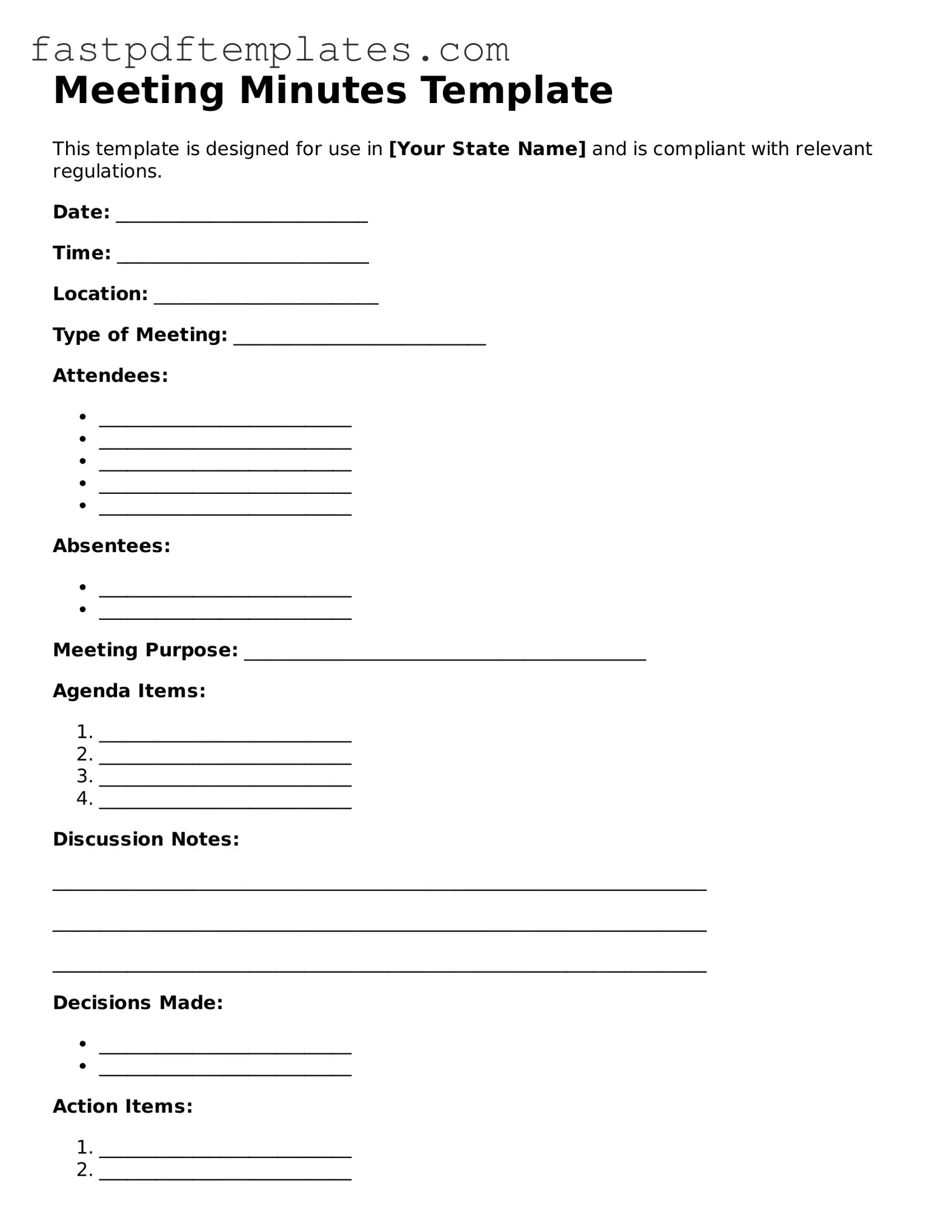Meeting Minutes Template
This template is designed for use in [Your State Name] and is compliant with relevant regulations.
Date: ___________________________
Time: ___________________________
Location: ________________________
Type of Meeting: ___________________________
Attendees:
- ___________________________
- ___________________________
- ___________________________
- ___________________________
- ___________________________
Absentees:
- ___________________________
- ___________________________
Meeting Purpose: ___________________________________________
Agenda Items:
- ___________________________
- ___________________________
- ___________________________
- ___________________________
Discussion Notes:
______________________________________________________________________
______________________________________________________________________
______________________________________________________________________
Decisions Made:
- ___________________________
- ___________________________
Action Items:
- ___________________________
- ___________________________
- ___________________________
Next Meeting Date: ___________________________
Minutes Prepared By: ___________________________
Signature: ___________________________
